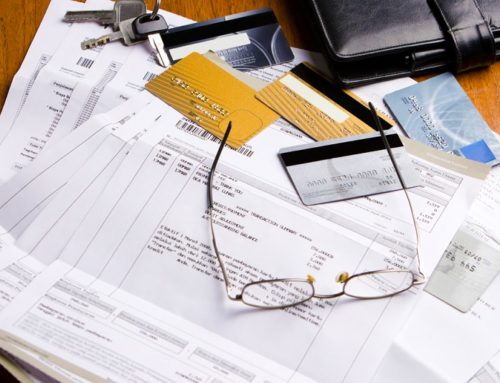January is a difficult month, financially speaking. Many families are dealing with the aftermath of the holidays.
You are probably dreading that credit card bill in your mailbox or you are avoiding logging in to your bank account so you don’t see the red.
But January is also the perfect time to start things on the right track.
“But where and how do I start?” you ask .
Here are 5 simple financial actions you can do in January so your year kicks off in the right direction:
- List all your debts and decide which ones you will tackle this year. When you are doing your list, make sure you list the amount outstanding, the limit available on each credit card/line of credit, the interest rate and the priority (how important is it to you to pay off this debt?) . Listing the limits available will allow you to see if you can move around some high-interest debts to a lower-interest one. Once you are clear about what debts you have, then circle the ones you will tackle in 2018. But nothing gets done without a plan, so it’s crucial to brainstorm ideas about HOW you will get rid of the chosen debts.
- Calculate your net worth. Now that you have listed your debts, half of this exercise is already done! List all your assets (cash, investments, house value, car value,…) and deduct the total of your assets from the total of your debts. That gives you your net worth. This is what I call your financial weight at the start of 2018. It will be the number you will recalculate at the beginning of 2019 and see by how much it increased. It’s one way of measuring your financial progress over the next year.
- Start tracking your spending. If you have no idea where your money vanishes every month, January is the right time to start tracking every dollar you spend. Ideally you would track for 1 year so you get a clear image of your spending, and finally realize how much you spend on variable items such as eating out, gifts, and entertainment. Which tool you use to track does not really matter. The important thing is to choose the tool that gives you the highest chance of sticking to it (some tools are Mint, YNAB, EveryDollar,… or good old Excel which I personally use)
- Open a Xmas savings account. Whaaaat??? We’re in January and you’re already talking about Xmas that barely passed 2 weeks ago ? Yes ! Because January is THE time to assess your “holidays financial damage” and start putting money aside for Dec 2018 so the next holidays are not as financially stressful.
So let’s say you add up all your Xmas expenses (gifts, wine, chocolate, new clothes, tree decorations,…) and it’s around $1500 (that’s the actual Canadian average… check out this article )
When you divide $1500 by 12 months, you get $125. So get online now, open a FREE savings account and set up an automatic monthly transfer of $125. When December comes, your Xmas savings account will be fully loaded to cover your holidays spending. Wouldn’t that be great? Well, now is the time to plan for Xmas… not Dec 23rd!
- Last but not least, January is also a good time to review your 2017 goals you have established for yourself. Pull out that list and see what you have achieved and what you still have to work on. Do you need to adjust any of your goals? What happened in 2017 that prevented you from achieving them? What will you do differently in 2018? I love this saying by Einstein “Insanity is doing the same thing over and over again but expecting a different result” . So you want different financial results in 2018, you have to do something different than in 2017!
If you start by doing the 5 above listed financial actions, you’d be well on your way to having a GREAT 2018! All the best for the year ahead!






